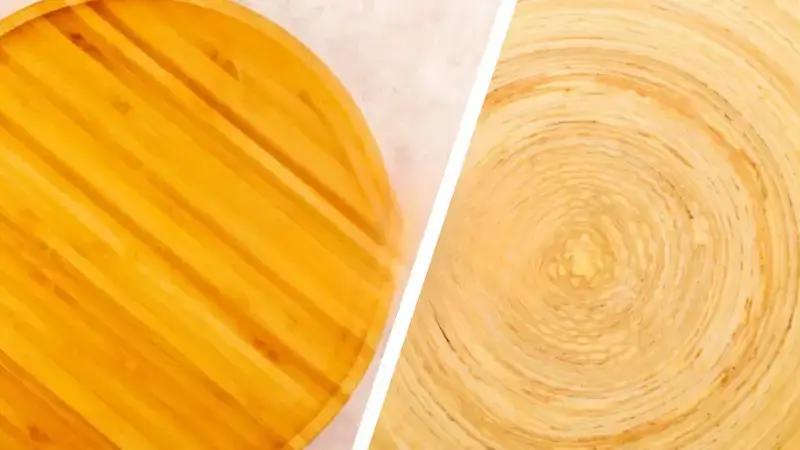
Mango Wood vs Acacia Wood: Durability, Finish & Cost Comparison
Choosing the perfect wood for your furniture is a blend of art and
science. It’s about more than just a pretty grain; it’s about understanding a wood’s unique
properties, from its hardness and finish to its cost and sustainability. A visit to a
furniture showroom near me can help you compare. Among the
rising stars in the world of home furnishings, mango wood and acacia wood have gained immense
popularity. Both are durable hardwoods that offer unique aesthetic qualities, but they have
distinct
differences that will influence your final choice.
Durability and Hardness
When it comes to the long-term resilience of your furniture, durability
is the most critical factor. Both mango and acacia are classified as hardwoods, but they exist
on
different points of the hardness scale, which is often measured by the Janka hardness
test.
- Acacia Wood:
Acacia is renowned for its exceptional hardness and density. Its Janka rating can vary
widely depending on the species, but many varieties are as hard as, or even harder than,
popular woods like oak and teak. This makes acacia highly resistant to scratches, dents, and
wear and tear, making it an excellent choice for high-traffic furniture like dining tables,
coffee tables, and flooring. If you need a quality furniture in indore,
look for Acacia. Its natural oils also provide a high degree of
resistance to water and pests, contributing to its longevity.
- Mango Wood:
Mango wood is a moderately hard wood, typically softer than acacia. While still very durable
for everyday use, it is more susceptible to dents and scratches than its acacia counterpart.
This relative softness, however, is a key benefit for artisans, as it makes mango wood much
easier to carve and work with, allowing for more intricate and detailed designs. Mango wood
also has a good natural resistance to water, which makes it a viable option for a variety of
indoor applications. If you're looking for a best sofa set in Indore, a
Mango wood frame can be a stylish option.
Verdict: For maximum durability and resistance to daily abuse,
Acacia wood is the superior choice.
Aesthetics and Finish
The visual appeal of wood is often the first thing that catches a
buyer's eye. Both mango and acacia offer beautiful, distinct looks that can complement various
home
styles. You can buy sofa set in Indore made from
either of these woods.
- Acacia Wood:
Acacia is prized for its dramatic and often swirling grain patterns. The color palette is
rich and diverse, ranging from a light amber and golden brown to deep mahogany and dark red
tones. This natural variation ensures that each piece of furniture is truly unique. Acacia's
natural luster and bold grain make it a perfect fit for both rustic and contemporary
aesthetics, adding a sense of natural grandeur to a space.
- Mango Wood:
Mango wood is celebrated for its unique and captivating grain patterns, which often feature
stunning dark streaks or "spalting" caused by natural fungi. Its color is generally a warm,
golden-brown or honey tone, though it can also have hints of pink, green, or yellow. This
softer, more organic look is ideal for creating a warm and inviting atmosphere. Because it
takes stains and finishes very well, mango wood is incredibly versatile and can be
customized to suit a wide range of design preferences, from bohemian to modern minimalist. A
good sofa manufacturer in Indore might offer
pieces in both woods.
Verdict: This is a matter of personal preference.
Acacia offers bold, dramatic grains and colors, while
Mango provides a warmer, more rustic and unique
finish.
Cost and Sustainability
For many consumers, cost is a primary consideration, and the
environmental impact of their purchase is becoming increasingly important.
- Acacia Wood: The
cost of acacia wood can vary, but it is generally a mid-to-high range option, often priced
higher than mango wood. While acacia trees are fast-growing and can be sustainably
harvested, the price reflects its superior hardness, durability, and high demand. Its global
availability and diverse species also influence its market value.
- Mango Wood:
Mango wood is an exceptionally sustainable and cost-effective option. As a byproduct of the
fruit industry, the trees are harvested for wood only after their fruit-bearing life cycle
(typically 7 to 15 years) is over. This means the wood is a renewable resource that doesn’t
contribute to deforestation in the same way as other hardwoods. This eco-friendly aspect,
combined with its relative abundance, makes mango wood furniture a more affordable
alternative to many other hardwoods, including acacia. For affordable furniture
Indore, Mango wood is a great option.
Verdict: For those on a budget and with an eye towards
sustainability, Mango wood is the clear winner.
Final Recommendation
Your choice between mango and acacia wood furniture should be guided by
your specific needs and priorities:
- Choose Acacia Wood if: You are looking for a long-term investment
piece for a
high-traffic area. You prioritize a scratch-resistant, durable material and love a dramatic,
rich grain pattern.
- Choose Mango Wood if: You are seeking a budget-friendly and highly
sustainable option.
You appreciate a unique, warm aesthetic and value the ability to have more intricate or
carved designs.
Both woods offer a fantastic combination of beauty and durability. By
understanding their core differences in terms of hardness, appearance, and cost, you can make an
informed decision that will bring a beautiful, lasting piece of furniture into your home.


